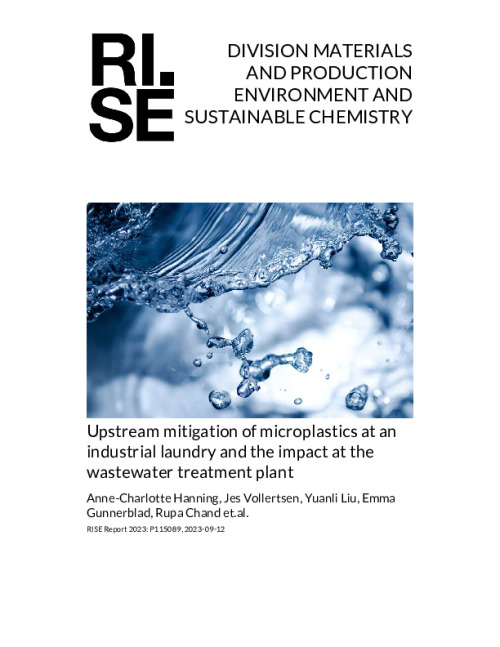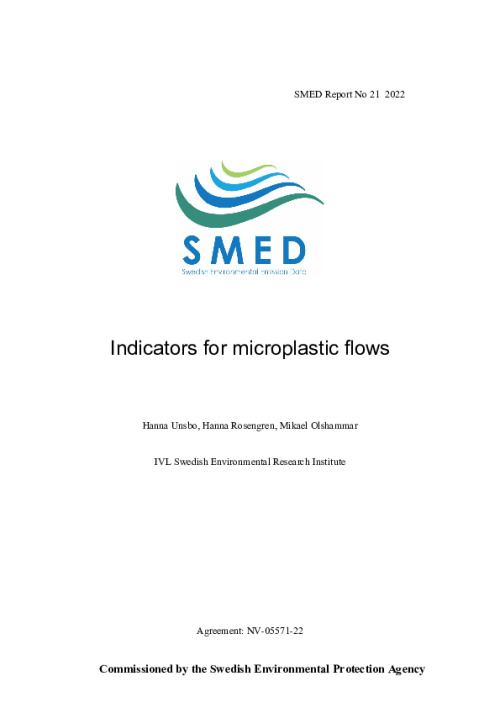Microplastic emissions from paint
The SMED produced report studies different kinds of paints and their connection to emissions of microplastics into the environment. Further it proposes potential indicators for how to monitor the microplastic emissions from paint in Sweden.
Swedish Environmental Emissions Data (SMED) is a collaboration between IVL Swedish Environmental Research Institute, SCB Statistics Sweden, the Swedish University of Agricultural Sciences (SLU), and the Swedish Meteorological and Hydrological Institute (SMHI).
Recent attention has been focused on the potential environmental and health impacts of microplastics, but there is still significant knowledge missing regarding these impacts. The Swedish Environmental Protection Agency has is responsible for the national plastics coordination, in which one aim is to develop new knowledge in relation to important sources of microplastic emissions. Within the scope of this work, SMED has been assigned to review the role of paints as a source of microplastics and suggest feasible indicators to monitor annual release from paints.
This report aims to compile existing knowledge of various paint and coating systems and their contribution to microplastic emissions. Sectors responsible for the highest emissions have been identified to facilitate prioritization of actions to lower microplastic emissions from paints. Additionally, this report proposes a key indicator for tracking annual national levels of microplastic emissions from paints. The report concludes that the sectors with the greatest risk for microplastic emissions from paint include architecture, antifouling and hull coatings, coatings used in general industry, and the automotive industry. In Sweden, data on the volume of architectural paints and antifouling/marine coatings placed on the market can be readily obtained from the Swedish product registry. However, information regarding paint usage in general industry and the automotive sector is limited because coatings are often applied overseas prior to import into Sweden and many of the products coated in Sweden are exported abroad.
This project has developed a simplified method to calculate annual microplastic emissions from paint in Sweden including emissions from architectural and marine sectors. Emission factors for different parts of a paint’s lifecycle were included and a range of solid contents based on a set of commercially available paints were used to provide a worst case, best case, and average case. By using this method, release of microplastics from architectural paint was estimated at 209 to 3 700 tons per year and release from antifouling and hull coatings at 30 to 308 tons per year in Sweden.
Comparing these numbers to estimated quantities of microplastic emissions from other sources, coatings are a substantial source of microplastics. 7 Wear from road traffic is regarded as the largest source of microplastics in Sweden, accounting for about 7 674 tonnes per year. It has been estimated that the amount of synthetic fibres released from textiles is between 8 to 956 tons annually and that microplastic emissions from industrial plastic pellet production is between 12 to 235 tons annually (Magnusson et al., 2016).
Since coatings typically need to meet various technical requirements to protect the underlying substrate from corrosion and wear, efforts to reduce microplastic releases from paint and coatings might incur higher costs and obstacles than efforts to address other microplastic sources such as littering.
For future monitoring of microplastic emission from paint in Sweden, the project recommends the amounts of architectural and boat paints including antifouling coatings placed on the Swedish market annually (expressed in kg of dry weight) as indicators.




